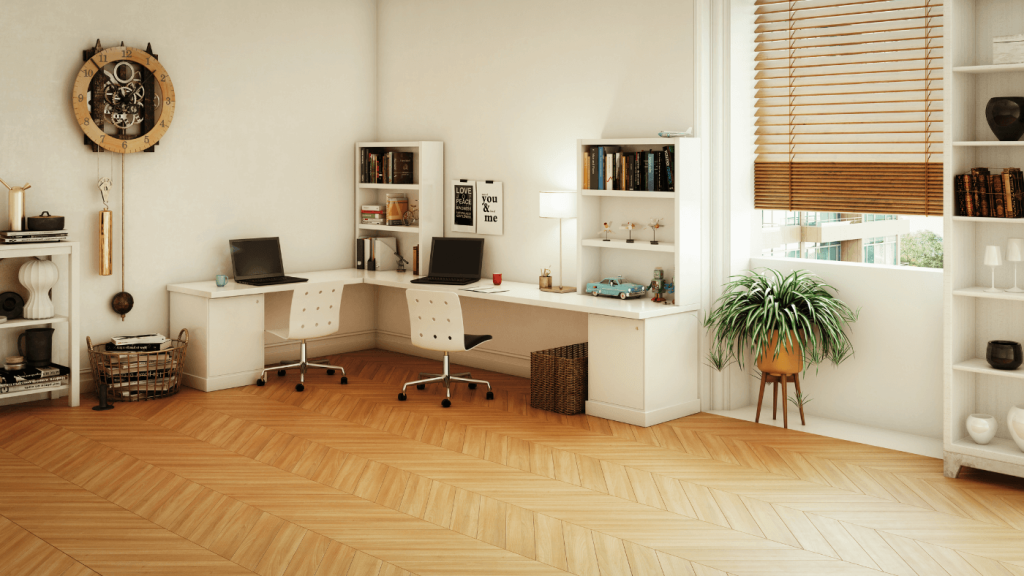Many individuals frequently disregard numerous details in their everyday environment. Design your vision and take a moment to survey your surroundings at this instant. You may realize that familiarity has rendered numerous items invisible. This phenomenon emerges due to your brain’s tendency to filter out these elements, causing them to lose their significance in your perception.
Consider the stacks of articles, the star-shaped stress toy, the elegant ebony calendar holder, your cherished mug, the warranty card, and the award ceremony pen set. These objects have transformed your workspace, masking its clear surface.
In a unique turn of events, all these items have managed to dominate your desk’s prominent space, effectively hiding its true surface. It’s as if locating an uncluttered area for work has become an elusive quest.
The choices you make in shaping your surroundings convey a narrative about you—a narrative that often uncovers more than you might initially recognize. When you design your vision, you might assert that your life isn’t guided by others’ perceptions, occasionally you might be surprised by the insights your environment reveals—insights that could even elude your own awareness. Allow me to share a story from a client who stumbled upon a fascinating revelation. This understanding not only illuminated her preferences but also provided valuable hints about her ambitions for her work environment.
Peggy’s narrative goes like this:
After residing in a new neighborhood for a few years, an opportunity arose for me to participate in the yearly House Tour, where community members graciously opened their homes to the public in support of charitable causes. I was enthralled by the charm and distinctiveness of these houses. Jump ahead five years, and I was contacted with an invitation to present my own home as part of the tour the next spring. ‘I’m truly appreciative of the offer, but allow me a day or two to consider it,’ was my reply.
I discussed this opportunity with a couple of friends while I was mulling over my decision. Their responses were measured—a moment of contemplative silence. ‘Peggy, your house is truly charming, no doubt about it. However, remember that the house tour involves people thoroughly exploring every corner of your space,’ Alice advised. ‘Just last year, one homeowner converted an extra closet into a mini office complete with an Apple computer, painting the space apple green, and adorning it with a red and white apple-themed border. Both the hosts and the attendees have a strong focus on ‘themes,’ ‘aesthetics,’ and ‘ambiances.’ It’s worth pondering if you’re at ease with this level of meticulous observation.’
I took a moment to step back and allowed those words to sink in. It dawned on me that I had never truly looked at my home from someone else’s perspective. For instance, that three-foot wooden pig planter positioned in the foyer wasn’t merely a container for a slightly dusty artificial plant—it evoked memories of a joyful farm vacation from years past. Likewise, the faded couch in the family room wasn’t just a piece of furniture; it held the essence of a cozy space where my family had shared wrestling matches, bowls of popcorn, and rounds of board games. No amount of fashionable throw pillows could render it ‘new’ for a public presentation.
In a reassuring tone, another friend added, ‘I don’t want to misconstrue my words—your home is truly beautiful. However, let’s be honest, decorating isn’t your primary focus. Your energies are directed towards family, work, and friendships, channeling your talents in different directions.’
In that very moment, a realization dawned on me. The thought had never crossed my mind that my home was essentially conveying a narrative about my core values and priorities. Although I don’t excessively worry about how others perceive me, it was genuinely enlightening to glimpse the unintentional message I was projecting.
As a result, I gracefully declined the invitation to showcase my home, opting instead to guide visitors through another dwelling. I took great delight in unveiling the faux-painting ‘treatment’ in the kitchen to all who visited. Having decoded the hidden message, I recognized that it was precisely the message I would consciously opt to communicate. My inclination leans more towards vivacity than opulence, preferring comfort over conventional elegance, and embracing authenticity over strict formality.
Now is the moment to undertake an unflinching and candid examination of your present surroundings and the story they tell to the world. While this scrutiny is especially pertinent within professional domains, it can also provide glimpses into the harmony and satisfaction you seek within your home environment.
To avoid feeling overwhelmed, start your journey by focusing on a specific area, like a closet, desk, countertop, or wall. Keep the scope manageable, no larger than a single room. Dive into assessing its current state, envisioning the visual elements, textures, scents, light, and sounds. Reflect on whether this environment ignites your enthusiasm and aligns with your ideal life and the narrative you want to convey.
Ron’s experience sheds light on this process. He began by tackling a kitchen drawer filled with various items. To his surprise, the drawer was cluttered with unnecessary things, some even posing safety risks.
Tim brings another perspective. He discusses transitioning to a virtual work setup but faced a fresh challenge when he invited clients over. His den-office and nearby half-bathroom, once personal spaces, suddenly appeared cluttered and restrictive to his clients’ eyes. This realization prompted him to embark on significant improvements.
“Approximately six months ago, we resolved to shift our company to a ‘virtual’ framework. We relinquished our physical office, installed our computers, and committed to working remotely. Initially, everything appeared seamless. However, I arranged meetings with two clients at my residence. As I assessed my hybrid den-office and the adjoining half-bathroom, they no longer felt like my private domains where I could work in pajamas throughout the night and leave a yogurt container on my desk. Suddenly, my attention was drawn to the peeling wallpaper trim and the magazines strewn across the floor.
The atmosphere that once seemed sufficient in solitude now appeared cluttered and confining when viewed through the imaginative eyes of my clients. This fresh vantage point marked a notable stride towards enhancement.”
You can read more of my blogs here.




